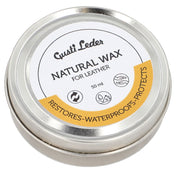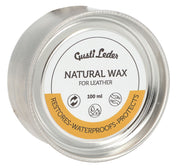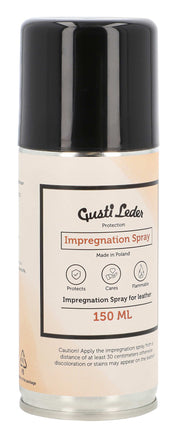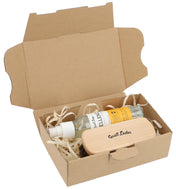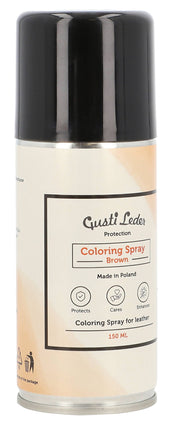The intensity of the care required depends primarily on the production of the leather, but also on the processing and stress to which the respective product is exposed.
Leather care is intended to preserve the longevity of the product; it should be protected from dirt and environmental influences (e.g. rain or UV light), maintain the suppleness of the leather and prevent brittleness.
Many people realize that shoes, due to the wear and tear they endure, require a certain amount of care to maintain their quality. However, leather furniture, car seats, and bags also need regular care to ensure long-term enjoyment.
What makes good leather care?
Good leather care should be adapted to the product and the demands placed on it.
What all care products have in common is that they replenish the leather's fat and make it water-repellent or waterproof.
It is important to always test the care product on an inconspicuous area of the leather before applying it to the entire area, as otherwise unsightly and unwanted discoloration may occur.
The following applies: Even inexpensive care is better than no care at all.
However, "tried-and-true" home remedies are now discouraged, as today's leather is thinner, softer, and tanned differently, requiring tailored care products. In some cases, the opposite effect will occur, and these well-intentioned remedies will damage the leather's structure.
What care products are available?
- Nursing cream
is an emulsion of water and fat. Due to its composition, it penetrates deep into the leather and is therefore also ideal for color refreshment.
- Care milk
It is also an emulsion of water and fats or oils, but thinner than a cream. It may contain other additives such as fragrances, solvents, surfactants for simultaneous cleaning, or UV filters. Its composition makes it particularly suitable for the care of larger surfaces.
- Leather grease
It is water-repellent and highly moisturizing, and should therefore be used sparingly. It is primarily suitable for leather used outdoors. It is only recommended for smooth leather, as it may stain open-pored leather.
- Leather oil
It should also not be used on open-pored leather. It is especially recommended for dry and brittle leather that requires significant re-greasing, as the oil saturates the leather, making it supple again.
- Saddle soap
is no longer used in leather care today, as modern cleaners and care products take the needs of the leather more into account
- balm
It is made from resins and waxes (e.g., beeswax) and is suitable for the care of smooth leather. Its primary effect is a dirt- and water-repellent coating. However, its pore-closing properties make this treatment unsuitable for automotive and furniture applications.
- shoe polish
This is another emulsion that usually consists of water, solvents, fats/oils, emulsifiers, antifreeze, preservatives, and possibly pigments to preserve and protect leather exposed to wind and weather. Shoe polish should also be used sparingly.
- Impregnating agent
Available in liquid or spray form, they are suitable for suede and nubuck leather and serve to protect the leather from moisture.
Sources (all last visited: 18.01.19):
- lederzentrum(dot)de/wiki/index.php/Lederpflege
- leder-info(dot)de/index.php/Lederpflege
- leder-info(punkt)de/index.php/Schuhcreme
- https://de.wikipedia(punkt)org/wiki/Lederpflege
- housekeeping(dot)info/cleaning/leathercare.php

